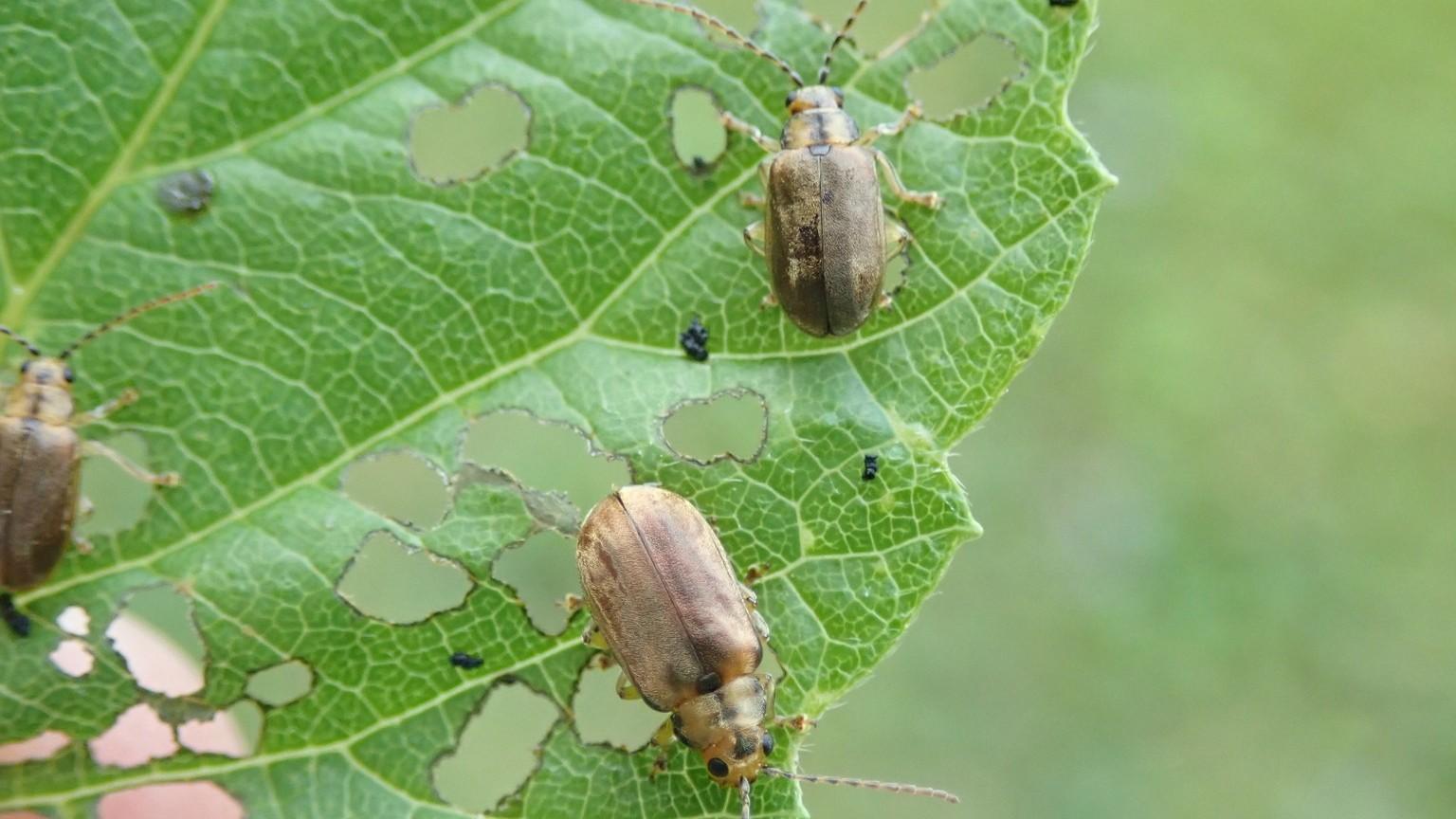About viburnum leaf beetle
Viburnum leaf beetle (Pyrrhalta viburni) is a recent, unintentionally introduced pest of viburnum in North America. It was first found in upstate New York in 1996. In Maryland, it has been reported minimally in a few counties (Garrett, Alleghany, Washington, Frederick, Baltimore, and Harford). Be on the lookout for this serious pest of native and landscape viburnums.

Viburnum leaf beetle larvae. Photo: Bruce Watt, University of Maine, Bugwood.org
Larvae and adults
Both feed on the foliage and can severely damage and eventually kill some species of viburnum. Larvae hatch in early May initially feeding together and skeletonizing the underside of leaves. As they grow, they consume the foliage. High populations may completely defoliate the shrub. Mature larvae are 10-11 mm long and yellowish-brown with black spots. They pupate in the soil in early to mid-June. Adult beetles are brown and about 4.5-6.5 mm long. They emerge in July and are present through September. Adult feeding appears as oblong holes in the leaves. Females lay eggs in cavities on twigs in late summer and fall. This beetle is spreading its range and is currently found in Maryland, New York, Maine, northern Pennsylvania, Vermont, parts of Ohio, Minnesota, Michigan, Canadian Maritime provinces, Ontario, and British Columbia.

Viburnum leaf beetle eggs and egg-laying damage on twig underside. Photo: Bruce Watt, University of Maine, Bugwood.org
Management strategies
Look for egg-laying sites on the twigs. Prune these twigs and dispose of them. The egg masses are easiest to find after viburnums have dropped their leaves. To control young larvae, monitor for skeletonized new leaves and use a registered insecticide, if necessary. Some species of viburnum appear to have resistance to this pest. Plant resistant varieties of viburnum such as dawn viburnum, V. bodnantense, Koreanspice viburnum, V. carlesii, David viburnum, V. davidii, Judd viburnum, V. x juddii, doublefile viburnum, V. plicatum, doublefile viburnum, V. plicatum var. tomentosum, leatherleaf viburnum, V. rhytidophyllum, tea viburnum, V. setigerum, and Siebold viburnum, V. sieboldii. Encourage beneficial insects in the landscape. Several native predators such as the spined soldier bug, and lady beetles feed on viburnum leaf beetles. Research is underway to explore more biological control options.

Viburnum leaf beetle damage. Photo: Paul Weston, Cornell University, Bugwood.org
Additional resources
-
Viburnum Leaf Beetle | Cornell University
-
Viburnum Susceptibility to Infestation | Cornell University
